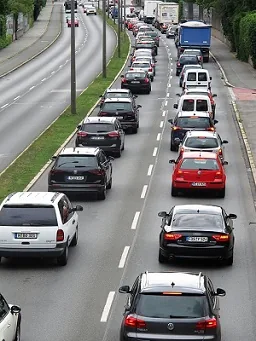Capital City Freeway Truck Accident – AutoAccident.com
I am Ed Smith, a Sacramento truck accident lawyer. Commuters faced heavy traffic slowdowns on Interstate 80 this week due to a truck losing its load near the Capital City Freeway junction. Truckers must take appropriate steps such as securing their load to avoid incidents that can cause significant loss of life and injuries.
What Happened
A big truck traveling east on I-80 on October 10 lost a portion of its cargo in the vicinity of Greenback Lane shortly after three in the afternoon, according to a representative of the California Highway Patrol (CHP), closing three traffic lanes.. This caused traffic to back up to the highway’s junction with the Capital City Freeway, the California transportation department reported. The lanes were reopened close to 5:30 in the evening. However, Caltrans said the traffic was moving slowly.
Incidence of Accidents Due to Roadway Spills
Overloading cargo or not securing it properly can lead to highway spills. According to a AAA Foundation report, roadway debris from fallen cargo or vehicle parts led to 25,000 accidents and 90 fatalities in 2001. This number of fatalities increased in the years 2011 through 2014. About 33 percent of the recorded fatalities were due to a driver trying to avert hitting debris in the road. The greatest problem is on crowded highways where drivers have little ability to avoid the debris. One particularly heinous type of accident occurs when the debris is airborne after leaving the cargo area and smashes through the windshield of another driver.
Why Such Events Happen
Roadway debris is usually the result of truckers not following the rules governing procedures used to promote safety on the roads. The Federal Motor Carrier Safety Administration issued standards in 2002 that required truckers and trucking companies who provide interstate transport to follow after January 1, 2004. The rules were designed to keep cargo in place, decreasing the number of accidents due to lack of cargo securement.
Regulations for Cargo Securement
The regulations specify that the procedures used to secure the load must meet the calculated performance criteria. This means that with a specific degree of lateral acceleration the cargo will remain secure. In addition, all parts used to secure the load must be in working order.
- Tie downs must be properly secured: Proper use ensures that the tiedown will not unfasten or loosen when the vehicle is in motion. If there is an edge against which the tiedown may rub, causing it to open, a guard must be used to ensure this does not happen.
- Headerboards: Headerboards must be used if the cargo abuts the front end of the vehicle.
- Anchor rating and marking: Under the new rules, the anchors are not required to be marked or rated.
Number of Tiedowns
The number of tiedowns is regulated based on the length and weight of the cargo. For example, cargo that is five feet or less long and weighs 1,100 pounds or less requires one tiedown. If the cargo is heavier than 1,100 pounds but the length is still five feet long or less, two tie downs are needed. Likewise, if the length is more than five feet but weighs less than 10 pounds, it still requires two tiedowns, no matter the weight.
Specific Cargo Rules
FMCSA has designated requirements for specific cargo types, including:
- Logs
- Building products such as dressed lumber or plywood
- Coils made of metal
- Pipes made of concrete
- Rolls composed of paper
- Automobiles
- Pickups and SUVs
- Machinery
- Crushed vehicles
- Containers
- Boulders
Responsibility for Roadway Debris
Generally, both the truck driver and the trucking company are responsible if a load was not secured properly or if too much cargo was loaded. Truckers should be trained in how to load their cargo and inspect it for deviation from the standards if someone else loads it. In some states such as Oklahoma and Florida, if the lost cargo resulted in injury such as a crush injury or wrongful death, the responsible party may serve prison time in addition to paying a fine. In California, under California Vehicle Code § 23112-23115, a fine of $200 to $2,000 is levied. The state may request the cost of cleanup from the liable party.
Sacramento Truck Accident Lawyer
I am Ed Smith, a Sacramento truck accident lawyer. Catastrophic injuries and death can result from flying debris that hits a vehicle or falls on the road. The extent of the injuries can range from traumatic brain injury to spinal cord damage. If this happened to you or if a loved one died because of it, call me at (916) 921-6400 or (800) 404-5400. I can offer you free and friendly advice.
I’ve helped fellow Sacramento and Northern Californians since 1982 to collect damages from wrongful death or traumatic injuries. If you want to know more about me, visit my Google, Avvo and Yelp pages where you will find reviews about my practice.
You can also go to my verdicts and settlements webpage to see what I accomplished in a variety of cases.
On AutoAccident.com you can find a compendium of legal resources. I founded and own this website.
Milliondollaradvocates.com is a forum I belong to. It represents trial attorneys who have demonstrated verdicts or settlements of at least one million dollars.
Photo Attribution: https://pixabay.com/en/jam-city-highway-stop-and-go-2500844/
:cd bw [cs 898] cv

